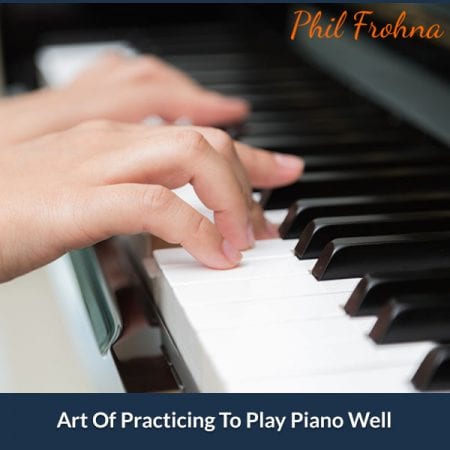 Many people practice playing the piano or other similar musical instruments for longer hours every day while others practice just for 20 minutes each day a few times every week. The question is, does it mean that people practicing for longer hours are more likely to get better? The answer is not necessarily. The number of hours you spend practicing to play piano has little to do with the progress you make. Remember, all great musicians are aware of the significance of practicing efficiently and with a lot of concentration. Here are some tips for your practice session.
Many people practice playing the piano or other similar musical instruments for longer hours every day while others practice just for 20 minutes each day a few times every week. The question is, does it mean that people practicing for longer hours are more likely to get better? The answer is not necessarily. The number of hours you spend practicing to play piano has little to do with the progress you make. Remember, all great musicians are aware of the significance of practicing efficiently and with a lot of concentration. Here are some tips for your practice session.
1. Set a goal
Do not just dive into a practice session without being aware of what you are trying to achieve. Before even sitting on the desk you must be aware of what you are going to do on the session. It could be one of these things,
- Coordinating left and right hands together.
- Improve capability to play the right-handed melody.
- Learning keys and recognizing notes from bass clef and treble.
- Memorize a part of a song.
- Play at a greater tempo.
The point here is that you need to set a goal that can be accomplished in a short period that is available for the practice session. Then you can play the piano to achieve this goal. It will reduce waste of time and will keep you focused.
2. Do a warm-up routine
Always remember that no pro athlete will ever start his practice session without a proper warm-up. The same thing is applicable for the pianist. Significantly, you have a routine for getting your fingers and head warmed up for the occasion. If you are only making a beginning try out “It Takes Five”. This is a terrific starting point for right-hand warm-up. Every time you sit for a practice session perform this warm-up by using the same material. Do not try anything new or complex. You must try things you are already aware of and do not strain your fingers. It is also about getting into the right mindset. Ensure that you have a calm mind and body to enter practice mode to play the piano.
3. Break down the task
After you have set the goal and are warmed up take out a few minutes to develop a plan for practice sessions. A good idea is to have smaller pieces of practice material. Practice step-by-step and use a single step at a time. If you are practicing with pros, every session will be well-structured and it will be broken into smaller pieces. It is an effective way of achieving your target efficiently. Even when you are not using this method, it might be a good idea to break down the session into smaller events.
4. Use a slow speed for practice
For avoiding mistakes you have to make sure that you are feeding your brain with the right info. This ensures that the brain can remember quicker. This is called brain synapses consolidation. If you try to practice too quickly you are more likely to commit mistakes. Remember, it takes time for fingers to memorize the right movements. Slow speed will ensure that you are relaxed and it takes away the pressure to allow quicker finger movement.
It is a good idea to get professional help as they can emphasize the significance of effective learning and practice. If you live in Tampa, FL area and need to get your piano tuned, you can get in touch with Phil Frohna Piano Tuning to get a quote.
Picture Credit: Freepik